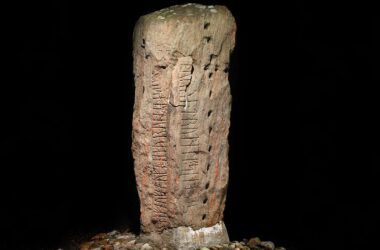Pied tamarins use odour as a communication tool
Tainara Sobroza
Monkeys in the Amazon Rainforest use olfactory communication nearly twice as often as they do vocal communication when their calls are drowned out by traffic and other human activities.
According to Jacob Dunn of the UK’s Anglia Ruskin University, “right in the middle of the Amazon Rainforest, you’ve got an extremely biodiverse rainforest with a massive city in the middle of it.” It’s clear that humans are having an effect on these animals, and that this is a major threat to them.
Critically endangered wild pied tamarins (Saguinus bicolor) use both vocal calls and scent-marking, in which they rub odours onto surfaces to mark their territorial boundaries and signal willingness to mate, to communicate with one another. Scent glands on the neck, wrists, feet, armpits, and genitalia aid in this process.
Dunn and his colleagues put monitoring collars on the dominant female monkey in nine groups of up to 13 pied tamarins to see if their communication strategies changed when they were exposed to increased background noise. For 10 days, researchers monitored the groups, noting how loud the environments were and recording the groups’ activities every five minutes.
The noise levels in the five different woodland areas where the monkeys were found ranged from 40 to 80 decibels, on average being roughly 59 decibels. Dunn speculates that the increase in decibels can be attributed to the proximity of motorways, military rifle training, chatty college students, or human newborns.
The monkeys’ scent-marking behaviour increased by 60% when the noise level exceeded 65 dB, compared to when it was at its lowest. Scent marking also increased by 90% when decibel levels hit 70, which is roughly the level of a noisy classroom or a running dishwasher.
Dunn claims that even in louder environments, monkeys did not resort to using fewer frequent vocal sounds. Their calls typically register at around 74 decibels, with a range of 89.
While vocal calls can travel quickly across great distances, scents can travel just a limited distance but remain effective for several days. To “kind of regulate competition for space,” as Dunn puts it, “they use these long calls to interact not only within their own species, but also with other closely related species.” And if they can’t because [human] noise is too loud, that can trigger further fighting.
Dunn argues that even while this study demonstrates the animals’ resilience, it does not change the reality that human noise pollution is harmful to wildlife.
FAQs
Q1: What is olfactory communication, and how do monkeys use it?
A1: Olfactory communication involves scent-marking, where monkeys rub odors onto surfaces to mark territory and signal willingness to mate. Monkeys have scent glands in various body parts for this purpose.
Q2: Why did researchers put monitoring collars on pied tamarins in the Amazon Rainforest?
A2: Researchers monitored the monkeys to observe changes in their communication strategies when exposed to increased background noise caused by human activities.
Q3: How did noise levels affect the monkeys’ scent-marking behavior?
A3: Scent-marking behavior increased significantly when noise levels exceeded certain thresholds, showing that monkeys relied more on olfactory communication in noisy environments.
Q4: Did monkeys reduce their vocal calls in response to noise pollution?
A4: Monkeys did not reduce their vocal calls even in louder environments, suggesting that olfactory communication complemented vocal communication rather than replacing it.
Q5: What is the impact of human noise pollution on wildlife in the Amazon Rainforest?
A5: Human noise pollution poses a significant threat to wildlife by disrupting their natural communication and behavior, potentially leading to conflicts and other challenges.







